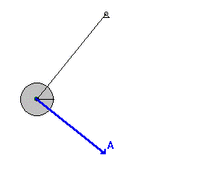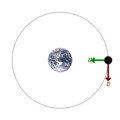Mechanical energy facts for kids
In physics, mechanical energy describes the potential energy and kinetic energy present in the components of a mechanical system.
When a given amount of mechanical energy is transferred (such as when throwing a ball, lifting a box, crushing a soda can, or stirring a beverage) it is said that this amount of mechanical work has been done. Both mechanical energy and mechanical work are measured in the same units as energy in general. It is usually said that a component of a system has a certain amount of "mechanical energy" (i.e. it is a state function), whereas "mechanical work" describes the amount of mechanical energy a component has gained or lost.
The conservation of mechanical energy is a principle which states that under certain conditions, the total mechanical energy of a system is constant. This rule does not hold when mechanical energy is converted to other forms, such as chemical, nuclear, or electromagnetic. However, the principle of general conservation of energy is so far an unbroken rule of physics - as far as we know, energy cannot be created or destroyed, only changed in form.
Images for kids
-
An example of a mechanical system: A satellite is orbiting the Earth influenced only by the conservative gravitational force; its mechanical energy is therefore conserved. The satellite's acceleration is represented by the green vector and its velocity is represented by the red vector. If the satellite's orbit is an ellipse the potential energy of the satellite, and its kinetic energy, both vary with time but their sum remains constant.
See also
 In Spanish: Energía mecánica para niños
In Spanish: Energía mecánica para niños




